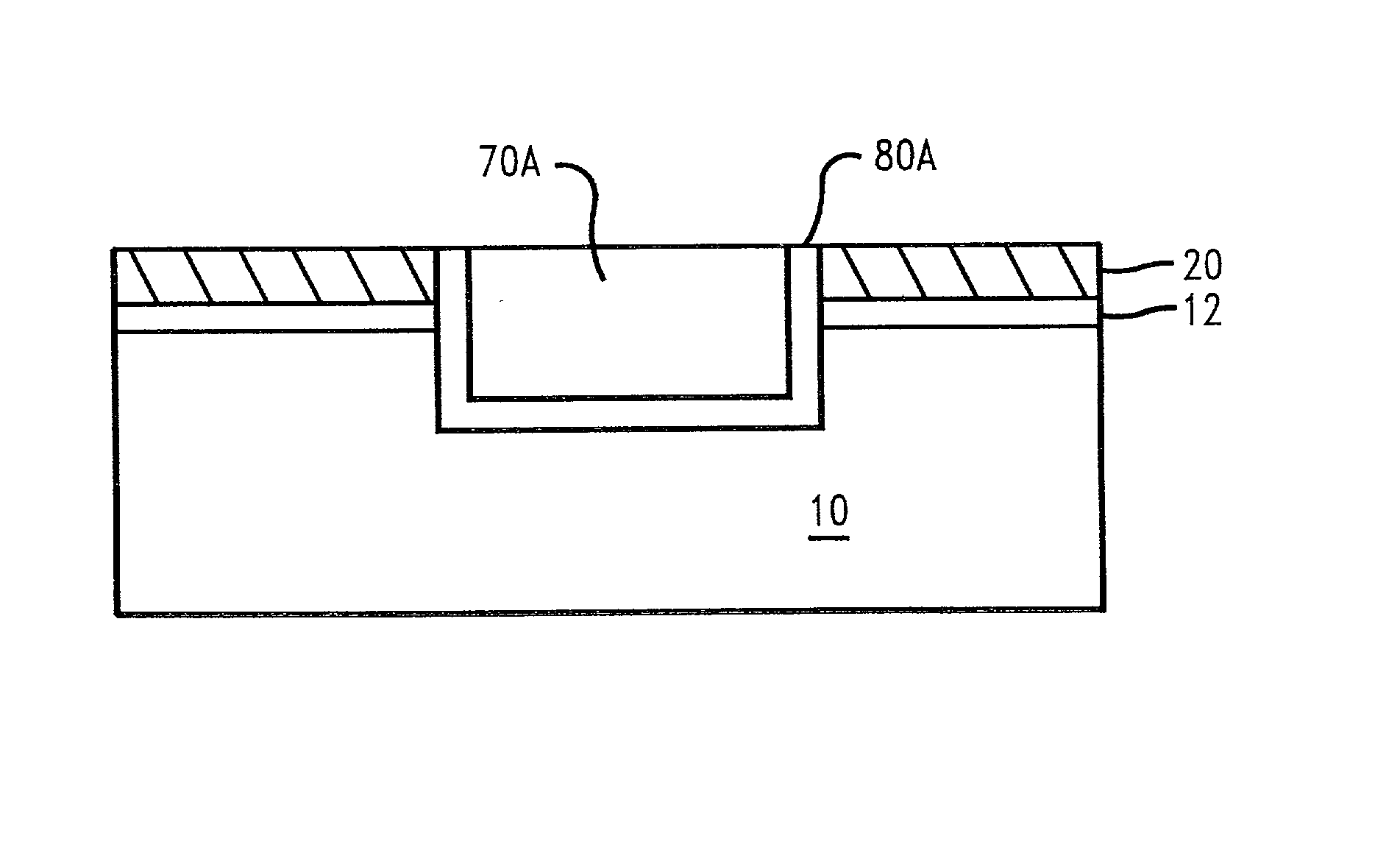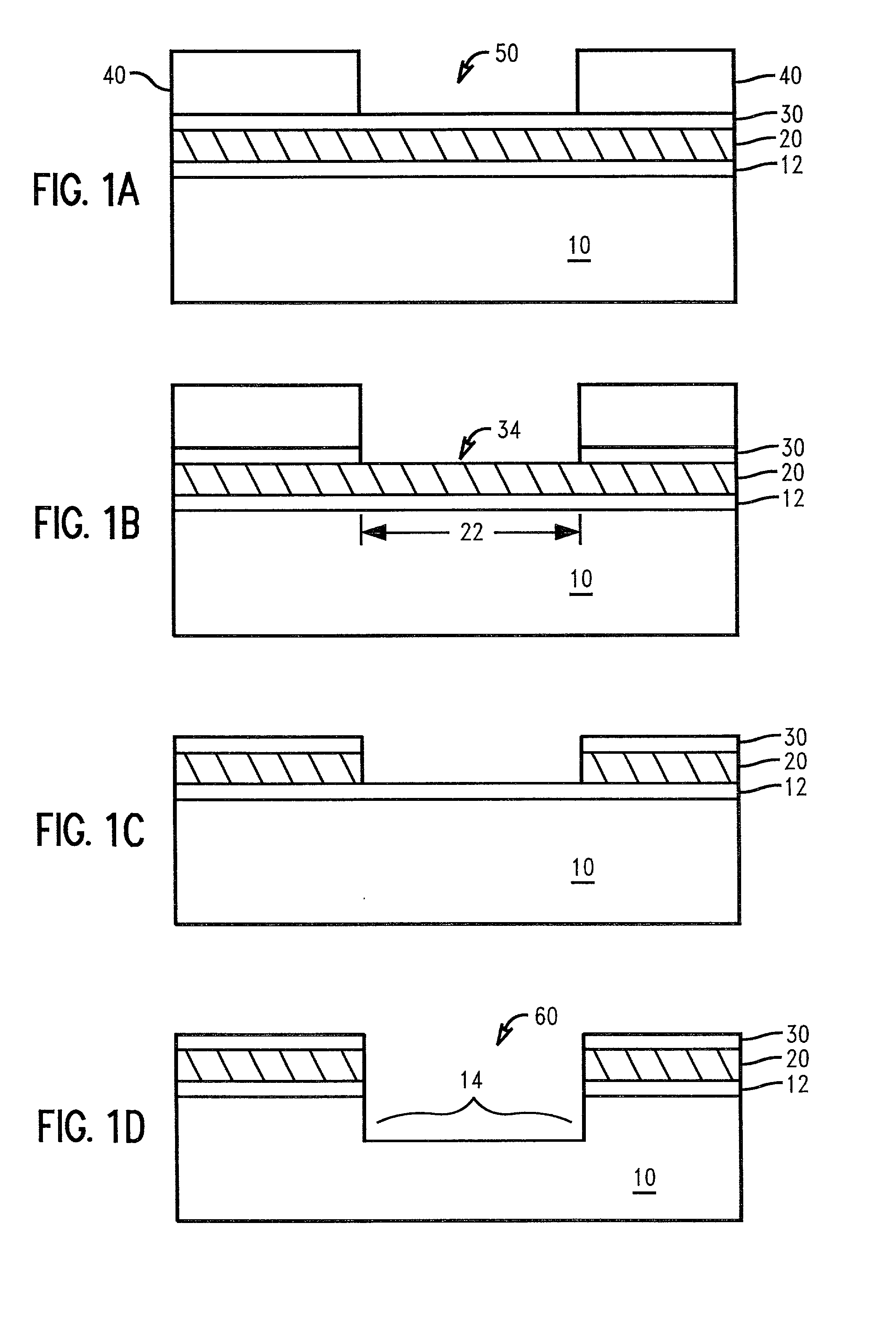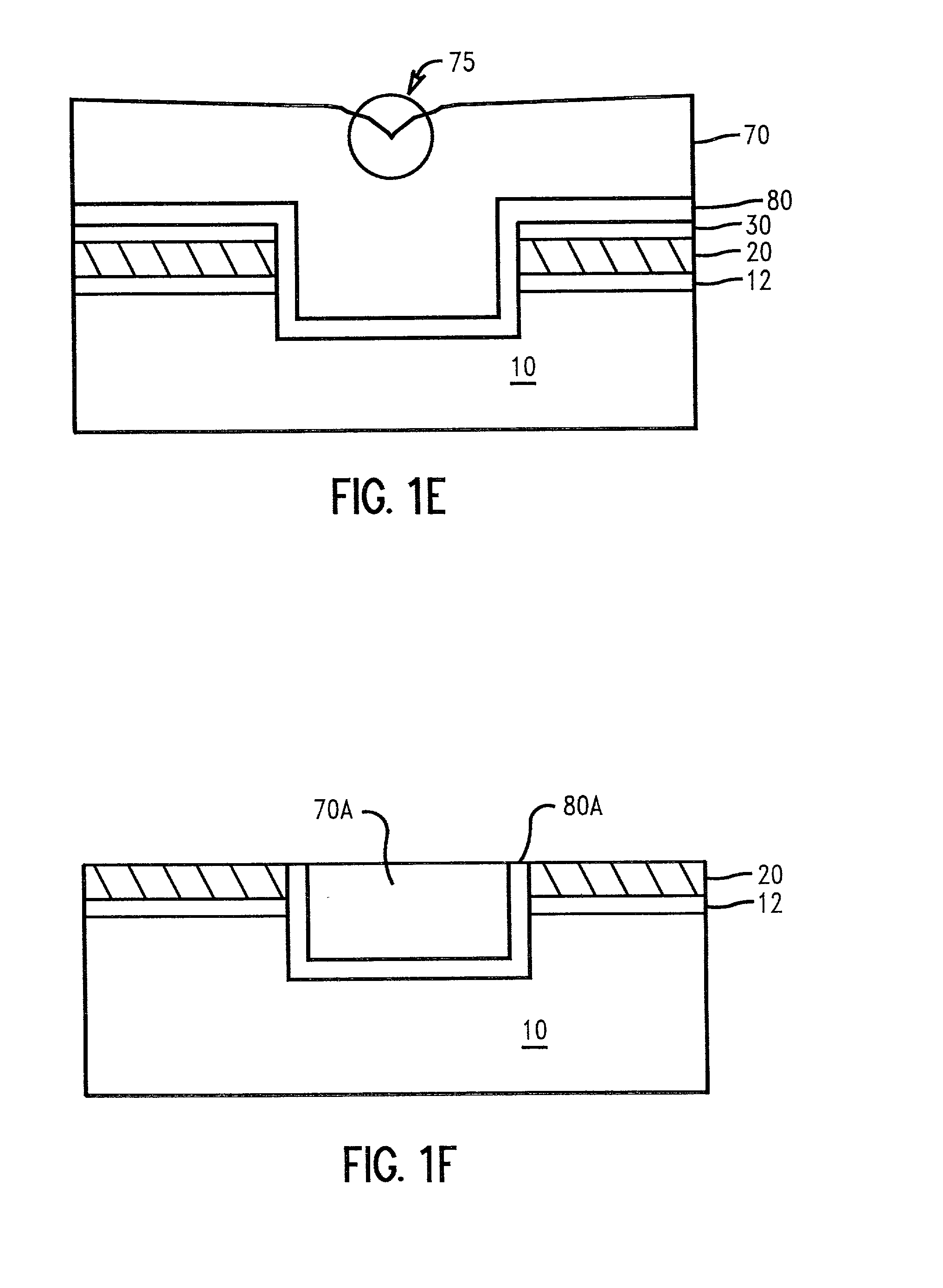Diamond as a polish-stop layer for chemical-mechanical planarization in a damascene process flow
a technology of damascene and polishing layer, which is applied in the direction of semiconductor devices, semiconductor/solid-state device details, electrical apparatus, etc., can solve the problems of ineffective use of diamond or diamond-like carbon materials as polishing stops, and the addition of topography of the surface of semiconductors, etc., to achieve the effect of greatly improving the thermal conductivity of the finished semiconductor chip
- Summary
- Abstract
- Description
- Claims
- Application Information
AI Technical Summary
Benefits of technology
Problems solved by technology
Method used
Image
Examples
Embodiment Construction
)
[0030] In describing the preferred embodiment of the present invention, reference will be made herein to FIGS. 1A-3D of the drawings in which like numerals refer to like features of the invention. Features of the invention are not necessarily shown to scale in the drawings. Numerous embodiments of the present invention are possible, including the embodiments described below.
[0031] The present invention discloses the use of diamond or a diamond-like material as a polish-stop layer to pattern and create a semiconductor surface in a Damascene process flow. The present invention may be used to create a variety of planarized semiconductor structures, such as multi-level metal interconnect structure, a semiconductor islands, and shallow trench isolation structures, for example. Generally, the present invention discloses a planarized semiconductor as well as a method of forming the same in a Damascene. Such method comprises optionally depositing a dielectric or conductive layer on the sur...
PUM
| Property | Measurement | Unit |
|---|---|---|
| thickness | aaaaa | aaaaa |
| thickness | aaaaa | aaaaa |
| depth | aaaaa | aaaaa |
Abstract
Description
Claims
Application Information
 Login to View More
Login to View More - R&D
- Intellectual Property
- Life Sciences
- Materials
- Tech Scout
- Unparalleled Data Quality
- Higher Quality Content
- 60% Fewer Hallucinations
Browse by: Latest US Patents, China's latest patents, Technical Efficacy Thesaurus, Application Domain, Technology Topic, Popular Technical Reports.
© 2025 PatSnap. All rights reserved.Legal|Privacy policy|Modern Slavery Act Transparency Statement|Sitemap|About US| Contact US: help@patsnap.com



